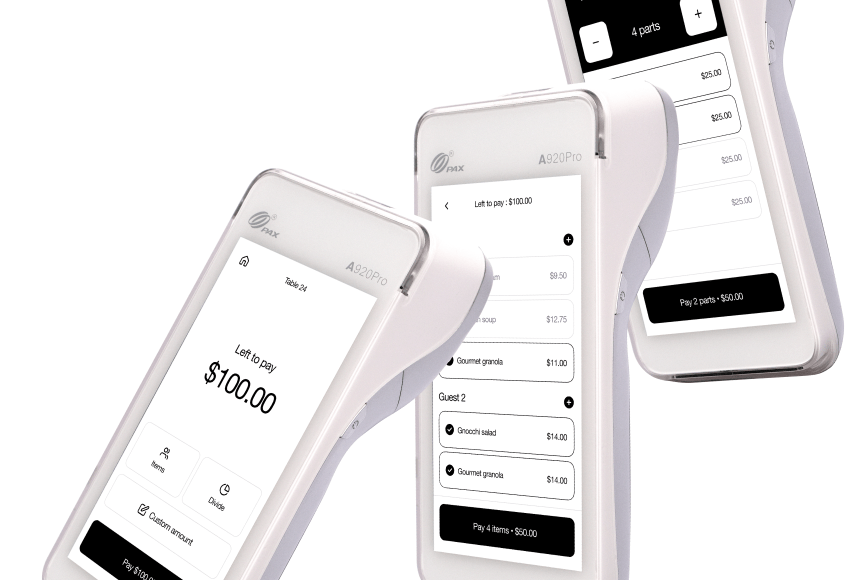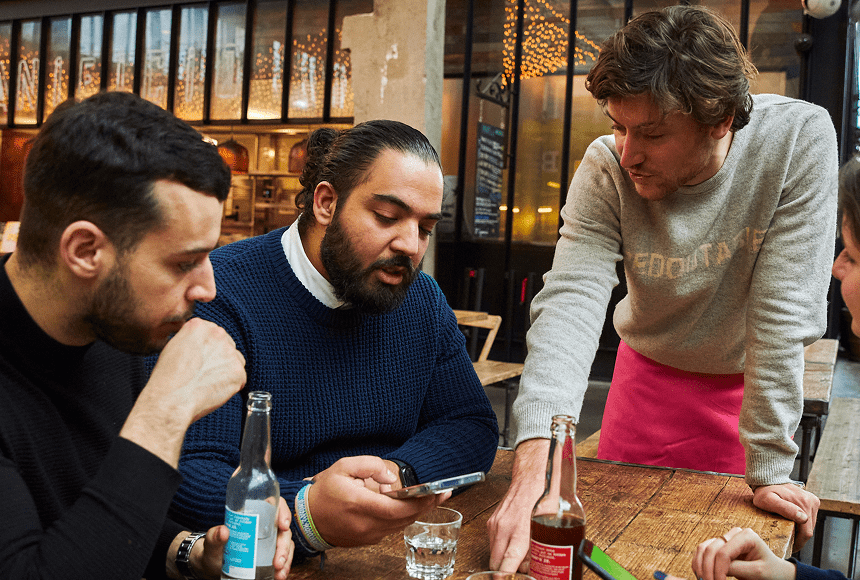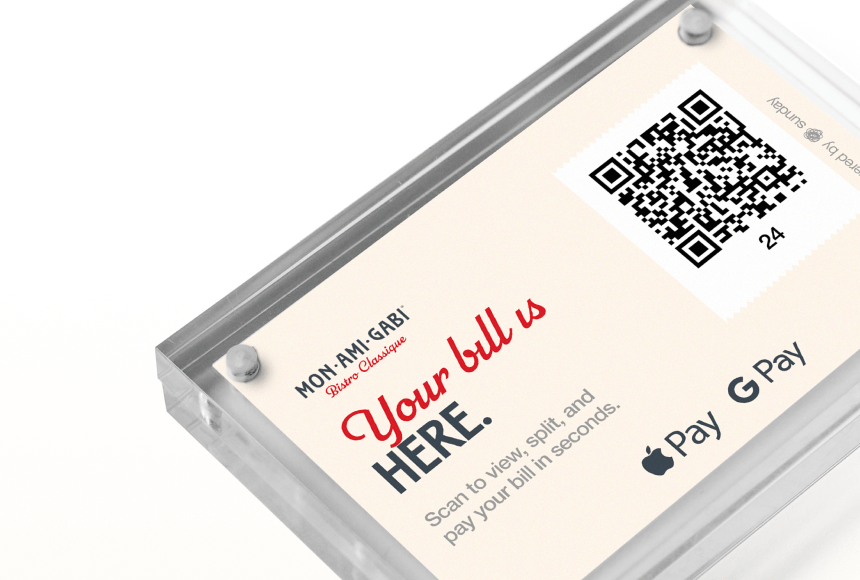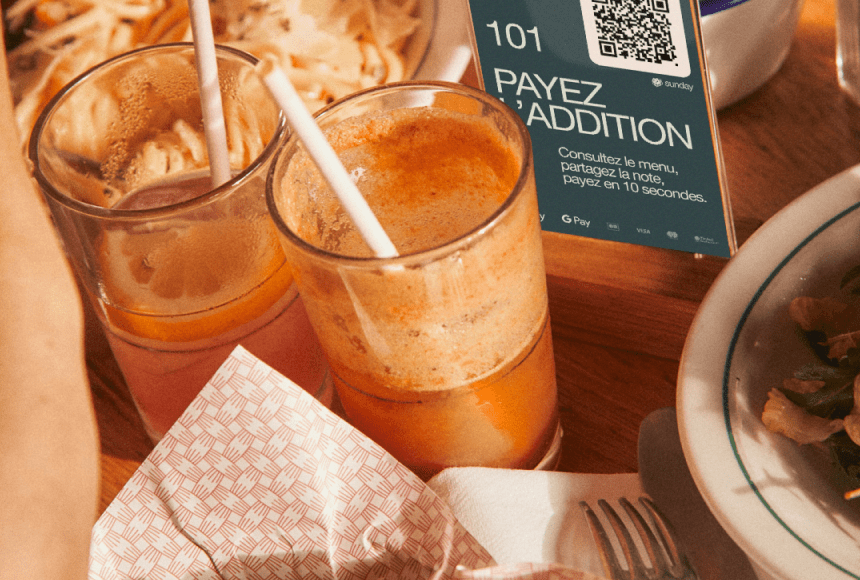
New Payment Frontiers in the Casual Dining World
The Rise of Casual Dining in America
Casual dining has taken the American food scene by storm. From laid-back brunch spots to hip neighborhood bistros, these restaurants have become the go-to choice for those who want a relaxed atmosphere without sacrificing quality. But what exactly is driving this shift? Beyond the obvious factors—like more adventurous palates and an increasingly time-strapped public—technology is playing a growing role in shaping how customers dine, pay, and even tip.
It might seem surprising at first, but the world of simmering pots, sizzling griddles, and mouthwatering pastries is now also home to QR codes and digital payment devices. Consumers want their mimosas quickly, and they also want to settle the bill with minimal fuss. This is where the right payment technology steps in to deliver a seamless experience.
From Brunch to Dinner: Meeting Guest Expectations
Think about your typical brunch crowd: hungry weekenders, families, or groups of friends looking to share a plate of pancakes. They want efficiency, friendly service, and a comfortable dining environment. Payment technology might not be the first thing that comes to mind, but it can be the unsung hero of that positive guest experience.
Whether it’s your best-selling guacamole and chips or the new carrot-ginger soup on the menu, your food needs to shine. The last thing diners want is a clunky payment process that sours their impression right when they’re getting ready to leave. Eliminating delays at the table and offering multiple ways to settle the bill can enhance the entire meal—from brunch and beyond.
How Payment Tech is Reshaping the Industry
People once paid for meals by handing over cash or swiping a physical card. Eventually, restaurants moved to more advanced methods, including mobile payment solutions and contactless options. Over the last few years, guests have grown accustomed to using smartphones for everything from ordering to tipping. The accelerated adoption of these digital tools has left many restaurant owners asking themselves: how can we keep up while maintaining the warmth and personality of our establishment?
According to the National Restaurant Association, consumer preferences are swiftly shifting toward faster, more flexible payment. Contactless payments alone have risen dramatically. This is no longer a “nice-to-have” but rather an expectation for a modern casual dining experience.
Key Payment Solutions That Simplify Dining
Before we jump into best practices, let’s look at some of the core payment technologies on the market. While specifics can vary, the most popular options share some fundamental characteristics: convenience, speed, and security. Below is a quick rundown of essential solutions:
- QR Code Payments: Guests scan a simple code at their table and pay directly from their smartphones—for many diners, that’s the ultimate convenience.
- Contactless Card Readers: These systems allow customers to tap their card for instant payment. Fewer swipes mean fewer headaches.
- Middleware Integrations: Ties in your ordering system, loyalty program, and payment platform so you don’t need separate solutions that don’t talk to each other.
- Mobile Wallets: Apple Pay, Google Pay, and other digital wallets offer frictionless payment that’s stored on the customer’s smartphone, lowering the risk of card fraud.
- All-In-One Tablets: Some restaurants provide handheld tablets that let guests order, tip, and pay directly at the table.
Each of these has pros and cons. A single system might excel for a high-traffic lunch spot but could feel too impersonal for a cozy brunch cafe. Consider who your customers are and how you want them to interact with your staff. The goal is always the same: reduce friction and create a more enjoyable experience—both for your guests and for your team.
Payment Tech as the Base Ingredient of a Winning Recipe
Every memorable meal starts with a base ingredient. Maybe your star dish relies on a rich broth or slow-fermented dough. Payment technology can act like that base in your restaurant’s financial recipe: get it right, and you have a consistent, reliable foundation that lets your unique culinary creativity shine. Botch it, and no matter how good your menu items are, there’s a chance your diners might walk away with a subpar final impression.
Just as you’d never overpower a subtle sauce with too many spices, you want to strike the perfect balance between technology and hospitality. Use digital tools to enhance your guest’s experience, not to overshadow the human touch that sets your establishment apart. Efficiency should supplement, not replace, personal interaction.
Capturing Real Results: The Impact of Digital Payment Improvements
So, how can these solutions help your bottom line? Let’s look at a hypothetical example: The Sunny Terrace, a small but popular brunch spot. They serve everything from breakfast burritos to brioche French toast. Their weekend lines are legendary, stretching well outside the front door by 10 a.m. Unfortunately, they had a recurring problem with turnover—diners would wait ages to pay, and the staff struggled to quickly turn tables. That meant fewer customers got a seat, especially during peak hours.
After investing in QR code payment technology, plus a contactless card reader for those who prefer tapping, The Sunny Terrace shaved minutes off each table’s turnaround time. Over a month, that modest change translated into:
- Improved Table Turnover: They could seat more customers in a single day without compromising service quality.
- Higher Customer Satisfaction: Fewer diners left in a rush. The payment process was so quick that guests felt relaxed, even on busy weekends.
- Greater Tip Volumes: With an automated tipping suggestion on the QR code interface, average tips rose by about 15% compared to the old manual tip approach.
These effects compounded. The restaurant reduced labor costs by lowering the number of staff hours needed just to process payments. With less time managing checks, servers could focus on building relationships with guests: making recommendations, checking on meals, and sharing dessert specials. That engagement, in turn, fostered a better overall experience.
Though this is a hypothetical scenario, it’s grounded in the kind of real-world insights many restaurateurs have shared. The payoff from implementing digital solutions, including the ability to collect immediate online reviews and feedback, can be significant.
Harmonizing Payment Tech and Warm Hospitality
Restaurants thrive on atmosphere. Whether you offer airy sidewalk seating, plush indoor booths, or a lively bar, your ambience is a key factor in attracting repeat patrons. A common concern about adopting new payment tech is the fear it will erode that cozy, human connection with guests.
Yet technology doesn’t have to be cold or impersonal. In fact, if integrated thoughtfully, it can elevate the personal attention you give your customers. Picture this: instead of your staff hustling back and forth to a stationary register, the same staff can stay tableside, focusing on conversation. They might even share a quick laugh as the guest easily scans a QR code to pay and leaves a comment or tip. It’s a small touch, but these personal moments often turn first-time visitors into loyal fans.
Tips and Gratitude: When Technology Meets Tradition
One treasured element of dining in the United States is tipping. While tipping culture can vary, it generally stands as a gesture of gratitude for quality service. Payment technology can make it simpler—or more complicated, depending on how it’s presented. The key is to ensure your digital system offers clear, fair tipping options without pressuring guests. A smart approach might involve pre-selected tip amounts on the screen (for instance, 15%, 18%, or 20%) plus the ability to enter a custom number.
Here’s what that can do:
- Streamline the Process: Having the tip built into the payment flow means no hunting for a pen or doing mental math at the table.
- Increase Tip Averages: According to some studies, digital tipping prompts can gently nudge people to tip within a recommended range.
- Provide Transparency: Some platforms can show exactly how tips are allocated, giving customers peace of mind that their gratuity supports the staff.
Payment technology reinforces the relationship guests have with your team. When everything is clear, user-friendly, and integrated into a pleasant experience, diners tend to tip more generously—simply because you’ve shown respect for their time and comfort.
Encouraging Guest Feedback and Online Reviews
Casual dining lives and dies by word of mouth. In the digital world, that word of mouth often takes the shape of online reviews. While not every restaurant day is perfect (sometimes the new burger buns are a bit too toasty, or your espresso machine decides to have a meltdown right during the mid-morning rush), encouraging honest feedback helps you refine operations and build trust.
This is another area where payment technology can help. With a quick scan at the table, diners can pay, add a tip, and then receive a gentle prompt to leave feedback—maybe even a link to post a review on Google. Instead of fumbling with multiple steps, visitors can share their impressions right there. When your staff is engaged, your food is delicious, and your technology is smooth, you’ll be surprised how many happy customers are willing to say so publicly.
Of course, you should also stay open to constructive criticism. By gathering data directly through the payment system, you can identify patterns—like whether the same dish is consistently faulted. That’s your cue to rework the recipe or adjust your approach. For more on maintaining high-quality guest experiences, you can check out resources from FSR Magazine, which regularly shares practical tips for full-service restaurants.
A Look at sunday’s Approach
In implementing payment solutions like sunday, restaurants can offer guests a simplified and frictionless payment journey. Instead of waiting for the check, customers can scan a QR code, settle up, leave a tip if they choose, and get on with their day. In a casual dining setting—where fast, friendly, and personable interaction is key—this kind of technology fits naturally. The best part is that your team can spend less time juggling credit cards and more time delighting customers with excellent service.
The brand identity at sunday centers on transforming the payment experience from a chore into a bright, seamless moment that matches the rest of your dining vibe. By removing obstacles to paying and tipping, you boost both revenue and goodwill. It’s the difference between a hurried sign-off and a pleasant farewell.
Integrating Payment Tech with Your Existing Systems
Implementation might feel like the biggest hurdle. You likely already have a point-of-sale setup, staff training protocols, and a flow that your servers are used to. The switch to digital or contactless payment often means changes in how your employees process transactions, track orders, and handle tips.
To make a smooth transition, consider these steps:
- Evaluate Your Current System: Are you reliant on outdated card readers? Could your customers benefit from a QR code option? Identify your friction points.
- Choose the Right Tech Partner: Find a provider that integrates neatly into your existing point-of-sale and front-of-house systems. Less fragmentation means fewer headaches for everyone.
- Train Your Staff: Host a training session where your team tries the new payment flow. Encourage them to ask questions. Clear communication will help everyone stay consistent.
- Promote the New Experience: Make sure your customers know about the new payment option. Post signage at the hostess stand or add a one-liner on your menu. It can spark curiosity and excitement.
- Gather Feedback: During the early stages, actively seek feedback from both staff and customers. This helps you make timely tweaks before small issues grow into big ones.
Overcoming Common Objections
As with any industry change, introducing new payment technology can bring concerns. Maybe your diners skew older, and you worry they won’t adapt. Or perhaps your staff is uneasy about any shift in their daily routine. Here’s how to address a few typical objections:
- “My clientele prefers cash.” You can still accept cash, but adding digital payment opens your business to a broader customer base, from millennials to traveling tourists.
- “I don’t have the budget for expensive upgrades.” Many QR code and contactless solutions have affordable or scalable pricing plans. Start with a pilot on a few tables if you’re unsure about a full rollout.
- “Technology feels impersonal.” In reality, freeing your staff from back-and-forth credit card runs means they can spend more time providing that warm, personal touch your guests love.
It’s wise to address these potential hurdles upfront. Proper planning, transparent budgeting, and open communication go a long way toward getting everyone on board.
Looking Ahead: Where Payment Tech is Headed
What does tomorrow hold for payment solutions in casual dining? While it’s impossible to predict every twist and turn, a few patterns are emerging:
- Even Faster Transactions: Speed, convenience, and fewer physical touchpoints remain priorities. This might lead to more integrated mobile wallets or face recognition for future transactions.
- Greater Data Analytics: Payment tech continues to evolve, capturing valuable information that restaurants can use to adjust staffing, inventory, and marketing. This can be done ethically, with the right level of transparency for your customers.
- Enhanced Personalization: Imagine your payment system automatically applying loyalty discounts or remembering a regular’s favorite dish. This kind of personalization will likely become more widespread.
- Blockchain and Cryptocurrency: While still not mainstream in every dining setting, there’s incremental growth in accepting crypto for payments. Keep an eye on trends among tech-savvy diners.
The overarching goal will remain the same: to deliver an easy, flexible, and pleasant experience for each guest. Innovations in technology can strengthen, rather than dilute, the bond between a restaurant and its customers—provided the changes are thoughtfully integrated.
Frequently Asked Questions (FAQ)
1. Will adding QR code payments drive away older or less tech-savvy customers?
It’s unlikely. While some older diners might prefer traditional card transactions, many are already accustomed to using smartphones for various tasks. Plus, you can offer multiple options—cash, card, and QR code—to accommodate everyone.
2. How secure are these digital payment methods?
Most modern payment platforms prioritize security. Technologies like tokenization, end-to-end encryption, and multi-factor authentication help safeguard transactions. Always make sure to partner with a provider that meets PCI (Payment Card Industry) compliance standards.
3. What should I do if my staff is hesitant to learn new technology?
Training and transparency are key. Offer clear explanations of how the tech works, why it benefits them (e.g., higher tips and fewer manual tasks), and give them hands-on practice. People generally adapt quickly when they see the immediate positives.
4. Does payment technology really help increase tips?
Often, yes. A well-designed system can gently nudge guests to tip more generously by presenting suggested percentages and a user-friendly interface. However, consistently great service remains the core reason customers choose to tip.
5. How can I gather feedback without bombarding my guests?
Design your digital flow with a slight prompt to review or leave a quick comment after payment. Keep it optional and short. That way, customers who are eager to share can do so, while others can simply dismiss the prompt.
6. Are there hidden fees or extra charges with digital payment solutions?
Fees vary by provider. Look for transparent pricing models. You might encounter costs per transaction, monthly subscription fees, or hardware rental fees for devices. Carefully review these and weigh them against the benefits and time saved.
7. Can I integrate payment technology with my existing loyalty program?
Many digital payment providers offer integrations for loyalty and rewards systems. Check whether your chosen solution syncs with your current program—or if you need to adopt a new setup. The payoff is a more streamlined experience for your customers.
8. What if the internet goes down or the device malfunctions?
Always have a backup plan in place. Maintain at least one traditional card reader. Train your staff on how to handle offline transactions. Redundancy might feel like an extra expense, but it can save you from major headaches.
By answering these questions, we hope you feel more confident about leveling up your payment technology. Whether your focus is on brunch, dinner, or a bustling weekend crowd, seamless digital solutions set the stage for a memorable, smooth experience. It’s about using innovation to reinforce the warm, welcoming vibe you already cultivate in your restaurant.
Find out more today
Drop us your details below and we’ll reach out within the next 24h
The payment terminal to make your operation simpler.
Connected to your POS, we offer the only payment terminal specifically designed for restaurants.




